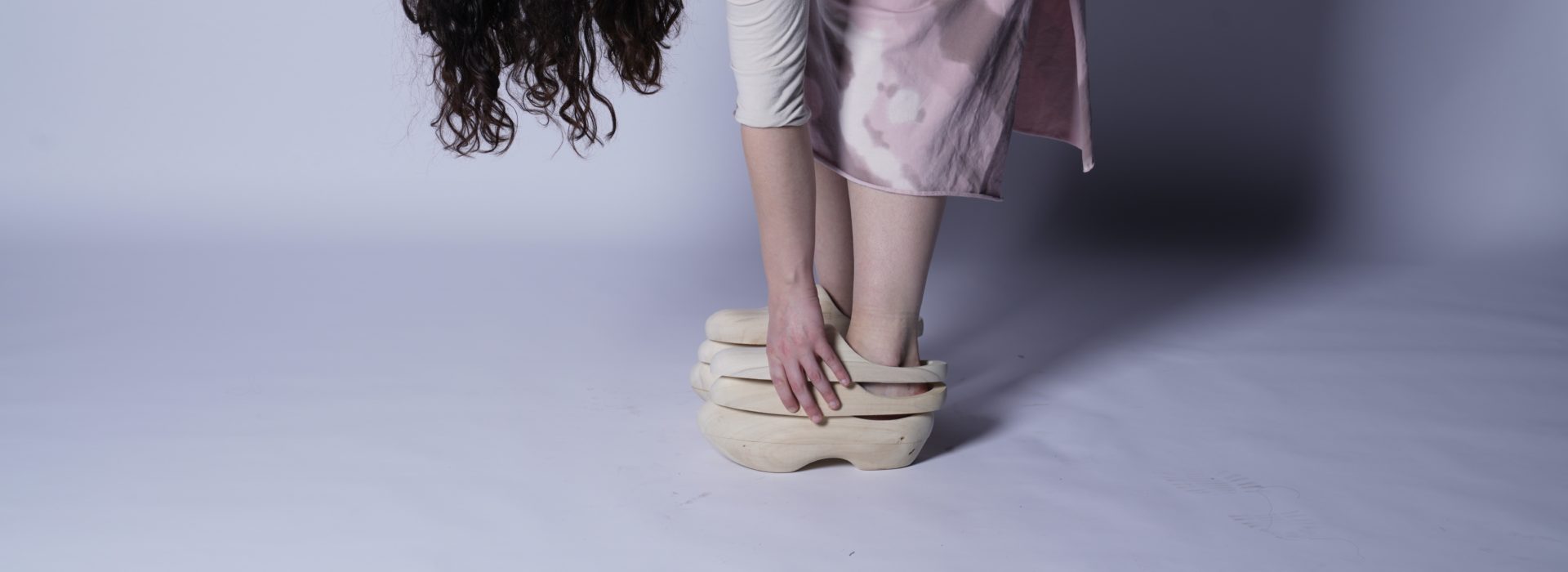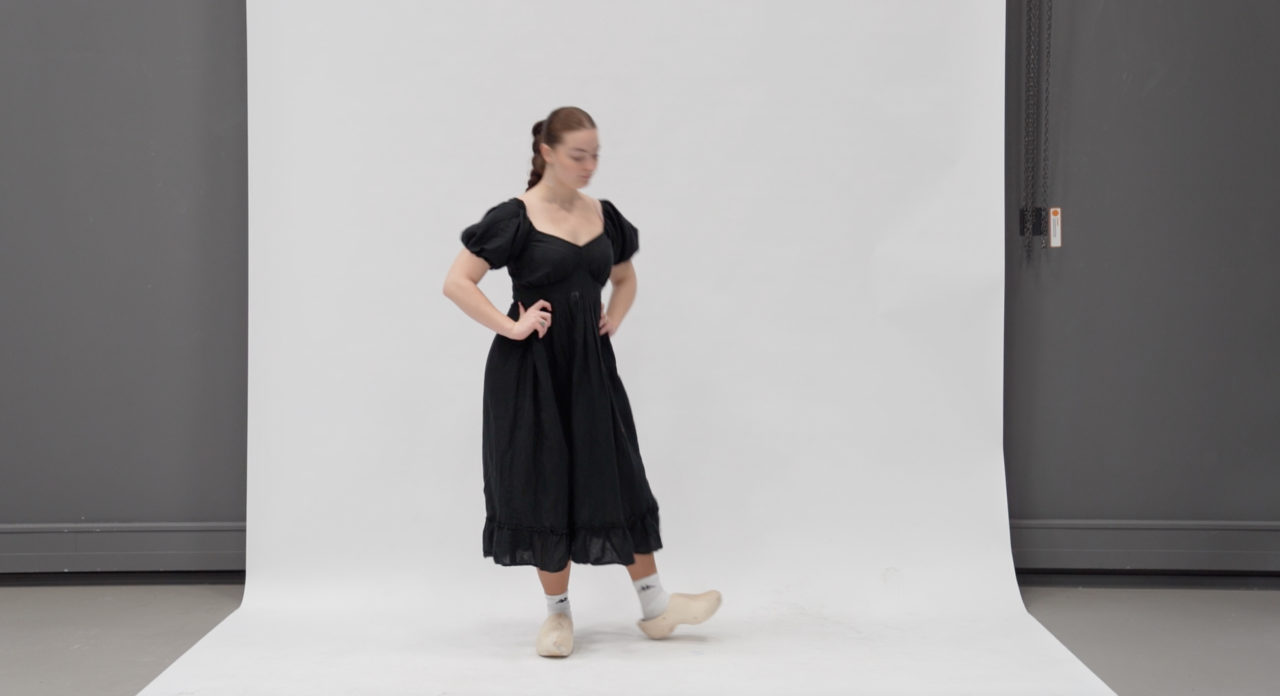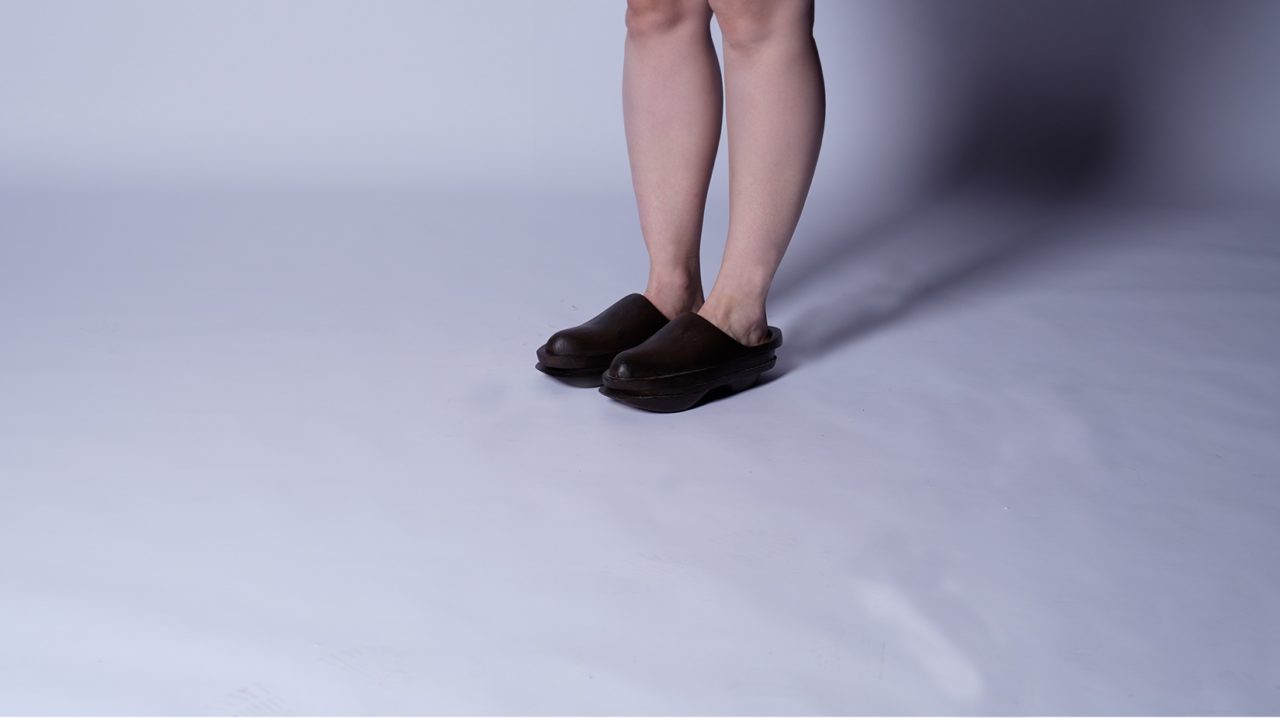Klamp | A modern wooden shoe

Annemieke Laban
Last summer, I had the most interesting conversation with my dear friend, Sam. As we sat in the warm sunshine and enjoyed the soothing breeze, our discussion ventured into the realm of trends and styles surrounding us daily. Little did we know that our dialogue would soon take an intriguing turn, leading us to explore the fascinating intersection of culture and fashion. During our conversation, Sam and I stumbled upon an observation: the resurgence of cultural clothing and its growing popularity among people around us. We loved how individuals embraced and proudly displayed their heritage through fashion. However, being Dutch ourselves, we couldn’t help but giggle at the thought of what our cultural representation in fashion would entail. Tulips, Hutspot, and even wooden shoes came to mind, sparking a burst of laughter between the two of us. With a mischievous twinkle in my eye, I turned to Sam and playfully said, “But really, who would want to wear wooden shoes, though?” Little did I know that this seemingly lighthearted remark would plant the seed for a project that would soon consume my thoughts and curiosity. That is how Klamp come to be.

The history of klompen, or wooden shoes, reveals their cultural significance within Dutch society. Originally made to provide protection for field workers, these shoes were associated with the working class and were even used in traditional klompen dances. However, the popularity of leather shoes and changing societal dynamics led to a decline in wooden shoe wearers and the wooden shoemaking industry. Despite the decline in production and everyday use, wooden shoes have found a new life as a tourist object, with millions of wooden shoe souvenirs being sold each year. However, many traditional wooden shoemakers are facing financial difficulties and a lack of government support. As a result, the wooden shoemakers are decreasing in the Netherlands and only 15 remain. During this project, 3 have already stopped without successors.

In this project, I explored various prototypes and production methods to create a modern wooden shoe. One prototype involving reassembling the wooden shoe in a different order showed promise and generated significant interest. Through this, I recognized the potential for these designer clogs to address the issue of disappearing wooden shoemakers. The collaboration focuses on designing a modern wooden shoe that minimizes the need for costly additional materials while implementing a profit-sharing model to support the wooden shoemaker. This collaboration aims to rejuvenate the wooden shoe industry, showcasing a harmonious blend of traditional craftsmanship and contemporary aesthetics.
Overall, the aim is to save the age-old craft of wooden shoemaking by transforming the wooden shoe into a modern version that resonates with contemporary society while preserving its cultural significance. Through innovative design and collaboration with traditional shoemakers, there is an opportunity to breathe new life into this age-old craft and ensure the preservation of its cultural heritage. By finding a balance between tradition and contemporary aesthetics, my project exemplifies the potential for the klompen to evolve and remain relevant in a changing world. I aim to contribute to the revitalization of the wooden shoe industry, providing a bridge between past and present while fostering an appreciation for this unique aspect of Dutch culture. Klamp; A modern wooden shoe.
